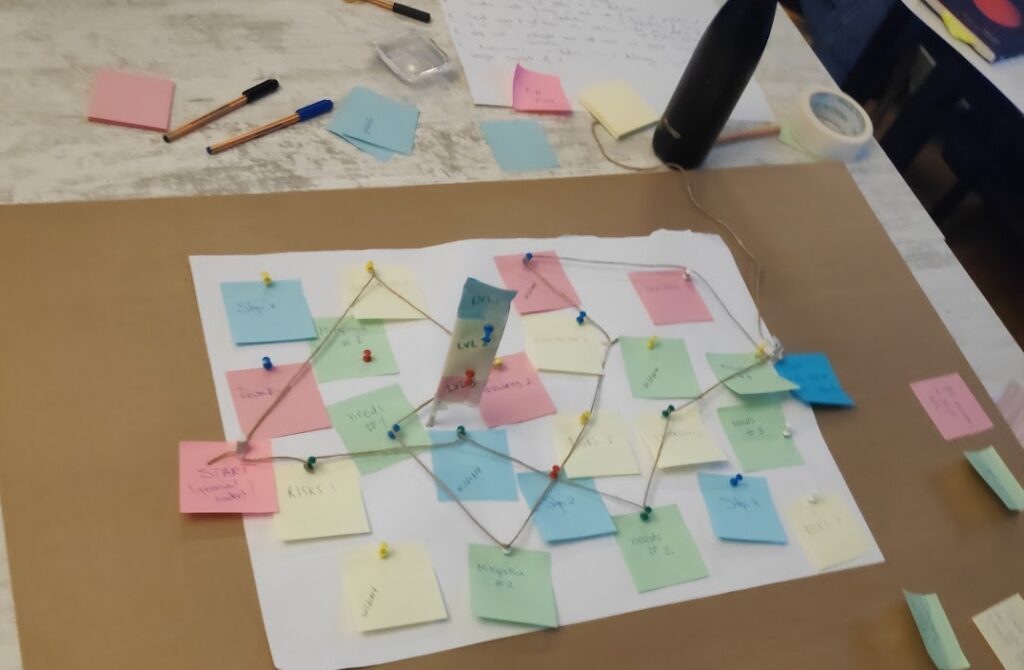types of roadmap
Roadmaps are useful tools for stakeholders, and they can take on two main design structures: network or linear. A linear roadmap follows a clear path from one milestone to the next in a sequential and orderly manner. Conversely, a network structure allows for a more interconnected and flexible approach, enabling multiple pathways and interdependence among various components. The decision on which structure to use relies on the project’s nature, organizational goals, and the intricacy in connections with various elements. Every structure has its benefits and drawbacks, allowing organizations to adjust their roadmap design to suit their particular objectives and changing initiatives.
The results of the workshop strongly point to organisational goals (in terms of the SENSE. consortium) preferring the network structure.
Common Themes from the Tbilisi Workshop
When going over the outcomes of group work in the workshops, and open reflection in the period after, a number of common themes emerged:
- Firstly, sensing and experience should take precedence over ‘right’ or ‘wrong’ answers and the experiences should be multilayered and meaningful. This means the outcomes of the roadmap should not only be read and understand but engaged with meaningfully.
- Building on the first theme, the importance of personalisation was repeatedly singled out. This is in alignment with Objective 4 of the project including to introduce a paradigm shift in STEAM education, by stimulating learners’ self-directed and co-operative learning. Allowing users of the roadmap to come in and leave as they please by making non-linear journeys possible adds a further dimension to personalization.
- At the same time as wishing to afford maximum personalisation, encouraging and empowering collaboration – both online and in person – was another common theme. This means it is expected that the roadmap should foster participatory approaches, and in particular enable not only seeking of answers, new approaches and practices, but also giving and sharing of these.
- Finally, there is a strong streak of fun, whimsy and even a little anarchy in the visions developed. Participants leveraged the full extent of their creativity to propose unconventional methods to fully engage diverse stakeholders through multiple senses. For the roadmap to become a serious contender for disseminating and changing existing educational approaches and practices the usefulness of this element should not be underestimated.
Viewed together these common issues can serve as a foundation for continuing with development of the roadmap. They provide a guide for the overall direction of ongoing work and mark the consortium’s preliminary vision and point of departure.

